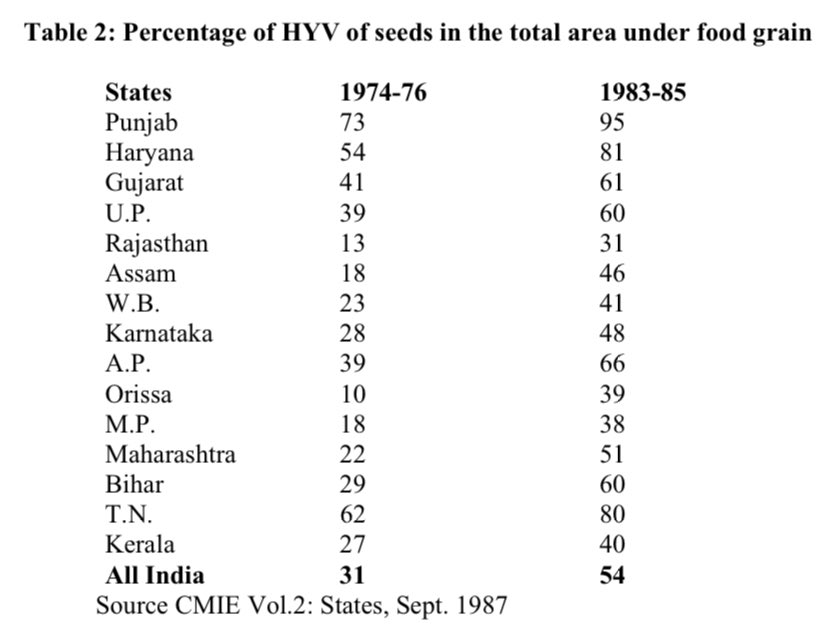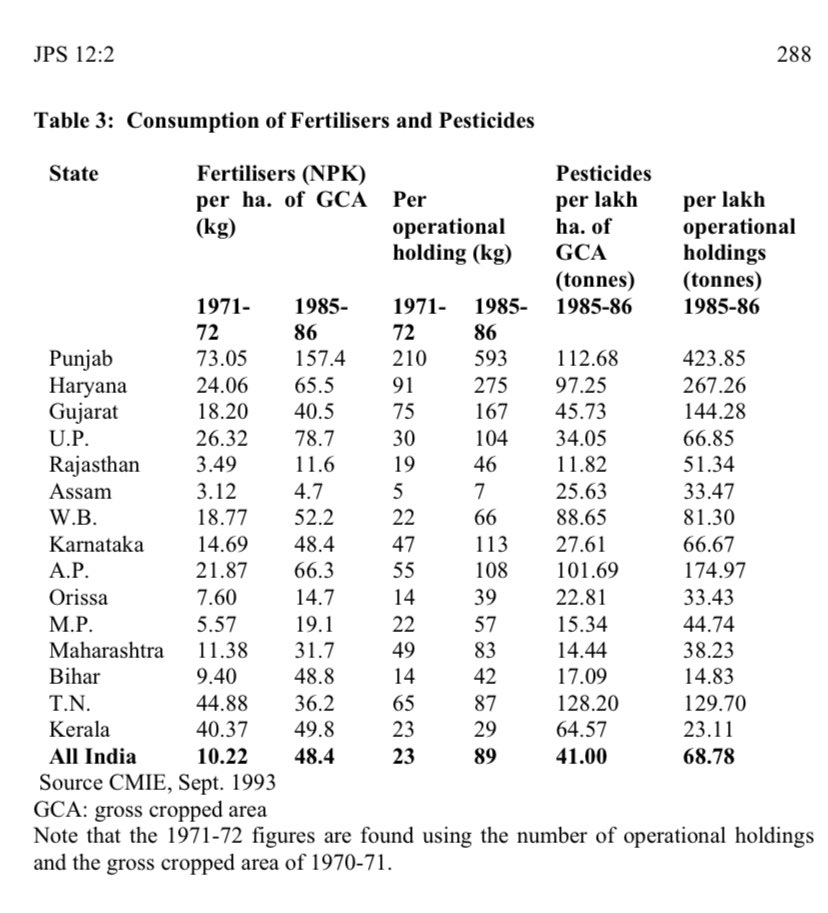
An estimate of the state level grains production, consumption, surplus and procurement policy disparities.
(Thread)
A] PRODUCTION
This is compiled according to the statistics published in 2018 by the department of agriculture, GoI. Have shown Sugarcane, Potato and Milk.
1/n
(Thread)
A] PRODUCTION
This is compiled according to the statistics published in 2018 by the department of agriculture, GoI. Have shown Sugarcane, Potato and Milk.
1/n

Few observations about the prod:
1. MH is missing since it largely grows sugarcane, cotton and cash crops and imports the grains. Among Southern states, Kerala is significantly dependent on imports for grains.
2. Punjab is extremely skewed on rice and wheat alone 2/n
1. MH is missing since it largely grows sugarcane, cotton and cash crops and imports the grains. Among Southern states, Kerala is significantly dependent on imports for grains.
2. Punjab is extremely skewed on rice and wheat alone 2/n

which is not a good farming practice as it drains the natural soil nutrition.
3. UP is a clear leader in every crop (except oil seeds) as well as in dairy. MP clear #2
4. AP is #1 in palm oil, milk, fruits and vegetables, cash and fisheries. Biodiversity leader of South.
3/n
3. UP is a clear leader in every crop (except oil seeds) as well as in dairy. MP clear #2
4. AP is #1 in palm oil, milk, fruits and vegetables, cash and fisheries. Biodiversity leader of South.
3/n
B] Consumption
While it is possible, but not straight forward to estimate the grains consumption by state.
There have been surveys to assess the per capita nutrition and food intake, and so far the reports I could find, the difference per capita between states is small 4/n
While it is possible, but not straight forward to estimate the grains consumption by state.
There have been surveys to assess the per capita nutrition and food intake, and so far the reports I could find, the difference per capita between states is small 4/n
Therefore, the following seems safe enough:
State Food Grain Consumption = State Population * India's Per Capita consumption
India's 2011 Per Capita consumption was 120 KG annual (avg for rural/urban), and using 2011 census we get the consumptions for top producer states 5/n
State Food Grain Consumption = State Population * India's Per Capita consumption
India's 2011 Per Capita consumption was 120 KG annual (avg for rural/urban), and using 2011 census we get the consumptions for top producer states 5/n

C] GROSS MARKETABLE SURPLUS
With Production and Consumption, we can now have the state-wise surplus.
State Surplus = Gross State Production minus Gross State Consumption.
(Prod data is basis 2017, Consumption is basis 2011. That shouldn't drastically alter the results)
6/n
With Production and Consumption, we can now have the state-wise surplus.
State Surplus = Gross State Production minus Gross State Consumption.
(Prod data is basis 2017, Consumption is basis 2011. That shouldn't drastically alter the results)
6/n

Now, I hope a few myths are demolished:
1. No, Thank you! Punjab is not feeding the rest of India. No large state of India is a net food importer (except MH and KL).
2. Since Punjab largely grows Rice and Wheat only, it is an importer of many essential food supplies.
7/n
1. No, Thank you! Punjab is not feeding the rest of India. No large state of India is a net food importer (except MH and KL).
2. Since Punjab largely grows Rice and Wheat only, it is an importer of many essential food supplies.
7/n
D] FCI / PROCUREMENT DISPARITY
As the above data shows, UP, MP, RJ, WB, AP -- all have a significant surplus they can market.
How much is the FCI intent to procure (therefore storage capacity) in each state, as compared to Grain Surplus? 8/n
As the above data shows, UP, MP, RJ, WB, AP -- all have a significant surplus they can market.
How much is the FCI intent to procure (therefore storage capacity) in each state, as compared to Grain Surplus? 8/n

The storage capacity mentioned above is used not only for procuring and storing rice and wheat but also potato, daals, sugar and other food items.
But FCI capacity and MSP are seriously biased toward one favored state and its produce!
That bias is unjust and must end!
9/9
But FCI capacity and MSP are seriously biased toward one favored state and its produce!
That bias is unjust and must end!
9/9
Notes:
1. MT is not Million Tonnes but Metric Tonnes
2. Some are saying Population growth rate must be taken into account. FYI, per capita grain consumption is reducing yoy, so the net effect would be only slight increase in consumption.
1. MT is not Million Tonnes but Metric Tonnes
2. Some are saying Population growth rate must be taken into account. FYI, per capita grain consumption is reducing yoy, so the net effect would be only slight increase in consumption.
@shivkmishr expert comments please
• • •
Missing some Tweet in this thread? You can try to
force a refresh




